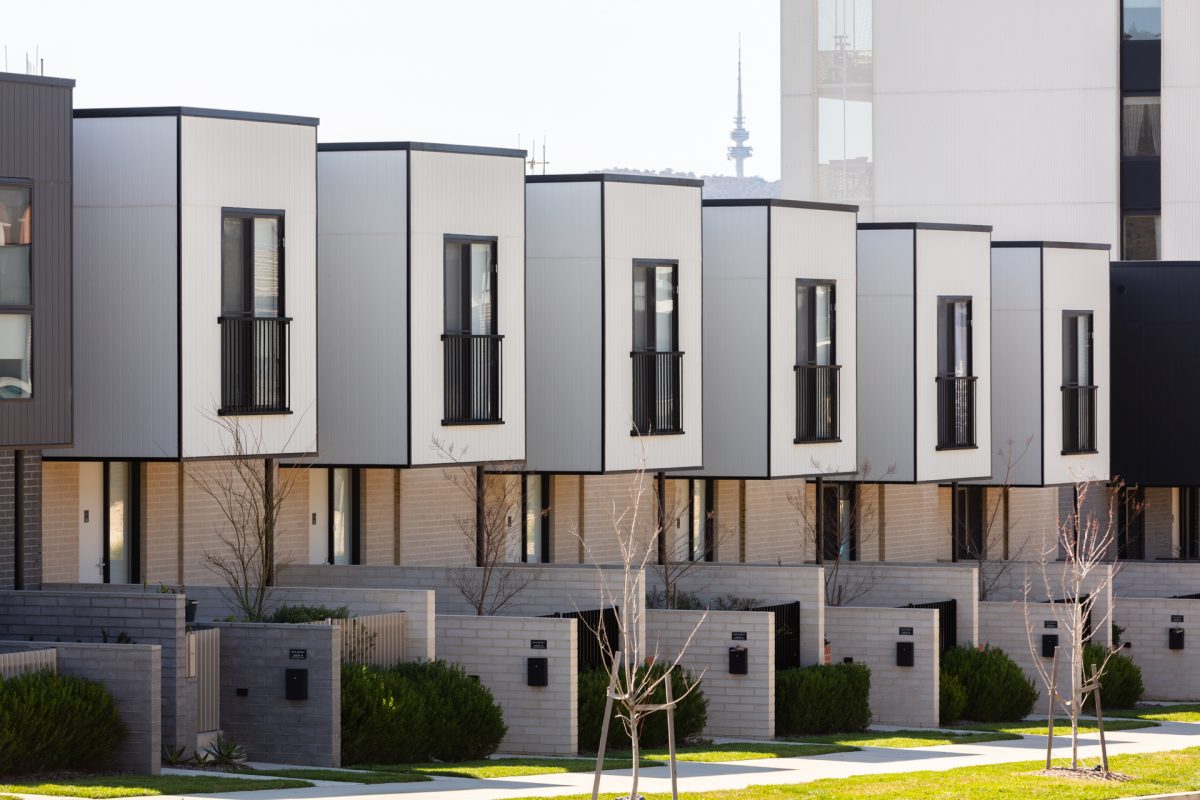
The changes will open doors for first-home buyers, but for how long? Photo: Michelle Kroll.
The Federal Government’s extended first-home buyers scheme is likely to provide a small window of opportunity before it pushes many properties past the $1 million price cap in Canberra or beyond people’s budgets.
The Home Guarantee Scheme’s new 5 per cent deposit and removal of the requirement for lender’s mortgage insurance have been welcomed by the property industry as opening up a struggling sector of the market, but there are concerns that it will put a fire under prices, putting the dream of home ownership even further out of reach.
Some, however, believe any price increase will be limited and temporary. The Housing Industry Association even believes that prices will start to fall after three years.
Cotality Research Director Tim Lawless said there would be diminishing benefits from the un-means-tested scheme as prices rose.
Mr Lawless said it probably had a lifespan that was constrained by the price caps.
“Unless we see the price caps being adjusted upwards, which I’d be surprised if it were the case, then you’ll find the stimulus gradually becomes less and less effective because more and more homes will get pushed above the price caps,” he said.
Mr Lawless said it would be a case of the earlier the better to enter the market, even before the scheme opens on 1 October.
Even with still paying LMI, buyers could be in a better position to benefit from the wave of capital gains the scheme is expected to stimulate.
The most desirable properties, which are closer to the price caps, would probably be the first to move. Then, demand would spread outwards towards more affordable suburbs or the cheaper apartment sector, where it would take a lot longer for the caps to be exceeded.
Mr Lawless said the other factor influencing prices would be the lack of stock to meet the increased demand.
“If you just look at listings in the marketplace broadly, nationally they’re tracking about 20 per cent below average for this time of the year,” he said. “Every capital city is well below average.”
Mr Lawless could not say how big a price surge there might be, given how demand would be concentrated around the lower price points.
“The Treasury forecast of 0.5 per cent additional growth after six years seems remarkably low,” he said.
Clarity Home Loans Managing Director Mark Edlund said many more Canberrans would now be able to qualify for the scheme, given that it was no longer means tested, and the ACT had the nation’s highest average salaries.
Mr Edlund said the previous income thresholds and $750,000 property cap had restricted many Canberra households.
“So as a couple, if you were earning above $200,000, you didn’t qualify, and there are a lot of joint public servant [households] earning a little bit over $200,000. That ruled them out,” he said.
“It’s absolutely going to open up the market for a much broader range of first-home buyers to get into property.”
Mr Edlund said that his brokers had already been fielding enquiries from people who previously didn’t qualify.
He expected the scheme to drive prices up from the bottom, and the mortgage insurance savings could be absorbed within 12 months.
The Property Collective’s CEO Will Honey is more sanguine about the extended scheme, calling it a big positive for the lacklustre Canberra market.
Mr Honey said it would open up a lot more doors for Canberrans, particularly for detached homes in the outer suburbs under the $1 million cap, given the median price of about $860,000 sits within that bracket.
But he believed any price kick would be localised and not reflected across the market.
“I don’t know if it’s that good a scheme to drive the whole market in an upward direction,” Mr Honey said.
“Pockets of the market will probably improve, but I don’t think we’re going to go through another boom.”
Mr Honey said the new cap would bring freestanding homes and larger townhouses within reach for first-home buyers.
He expected an influx of stock during the traditional spring selling season, which the scheme and lower interest rates would help to absorb.
HIA economist Tim Reardon said a rise in demand while supply remains fixed would lead to an increase in home prices, but this would be more pronounced in locations where first-home buyers are active and short-term.
Mr Reardon said that after three years, increased supply would mean prices moderate.
This is half the time Treasury believes it will take for the inflationary effects to wane.
HIA argues that the permanence of the change, including the removal of LMI, means that it won’t have the same impact as previous temporary schemes such as Homebuilder.
Mr Reardon said the removal of the LMI requirement was a permanent change that would facilitate a more orderly return to the market by first-home buyers.
“These same markets are the ones that will see the fastest increase in supply, largely through detached homes in greenfield suburbs,” he said.
“Impediments to apartment construction at present will see a quicker response from detached supply.
“More new home construction, fewer households renting and increased home ownership will all occur because of this policy announcement, eventually.
“It is also a decision that sees government taking a view on housing policy that extends beyond the next election, and for this, they should be commended.”




















